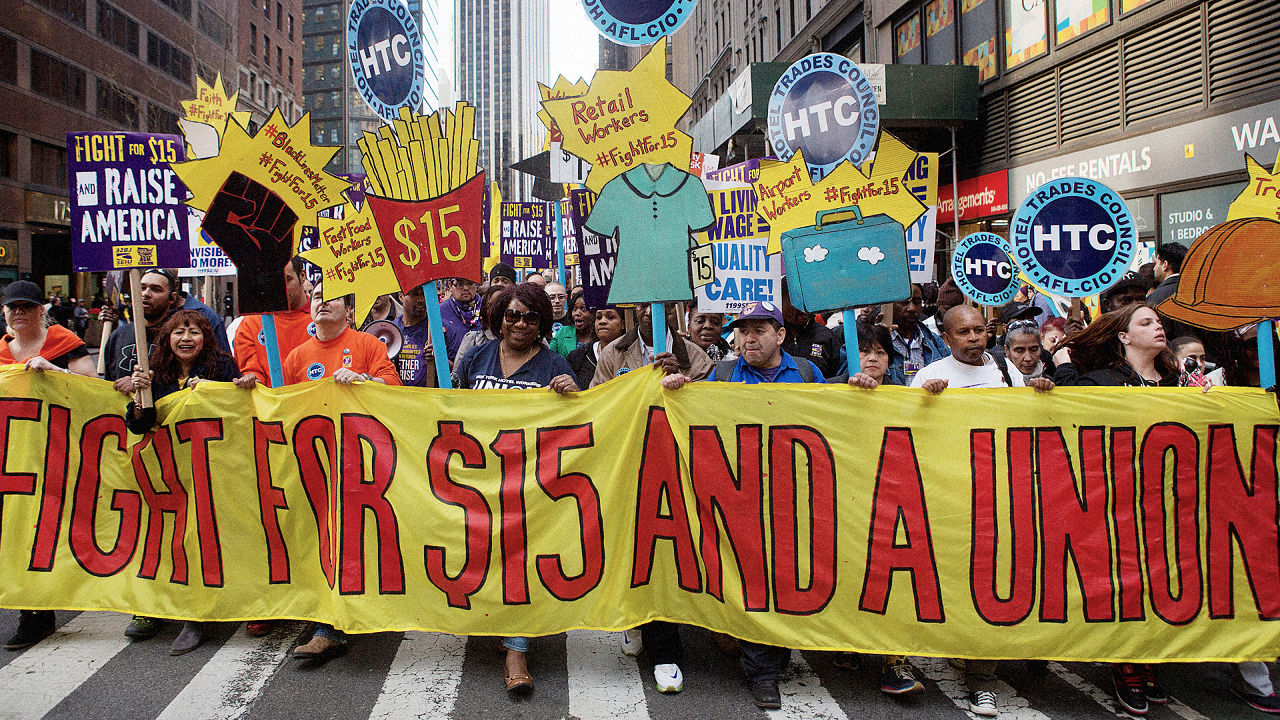
By Robert Pollin and Jeannette Wicks-Lim
From the abstract:
This paper considers the extent to which U.S. fast-food businesses could adjust to an increase in the federal minimum wage from its current level of $7.25 per hour to $15 an hour without having to resort to reducing their workforces. We consider this issue through a set of simple illustrative exercises, whereby the U.S. raises the federal minimum wage in two steps over four years, first to $10.50 within one year, then to $15 after three more years. We conclude that the fast-food industry could absorb the increase in its overall wage bill without resorting to cuts in their employment levels at any point over this four-year adjustment period. Rather, we find that the fast-food industry could fully absorb these wage bill increases through a combination of turnover reductions; trend increases in sales growth; and modest annual price increases over the four-year period. Working from the relevant existing literature, our results are based on a set of reasonable assumptions on fast-food turnover rates; the price elasticity of demand within the fast-food industry; and the underlying trend for sales growth in the industry. We also show that fast-food firms would not need to lower their average profit rate during this adjustment period. Nor would the fast-food firms need to reallocate funds generated by revenues away from any other area of their overall operations, such as marketing.
Read rest here
See also Jeannette Wicks-Lim’s Dollars & Sense piece on the economic feasibility of a $15 minimum wage here
